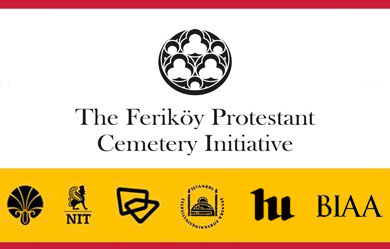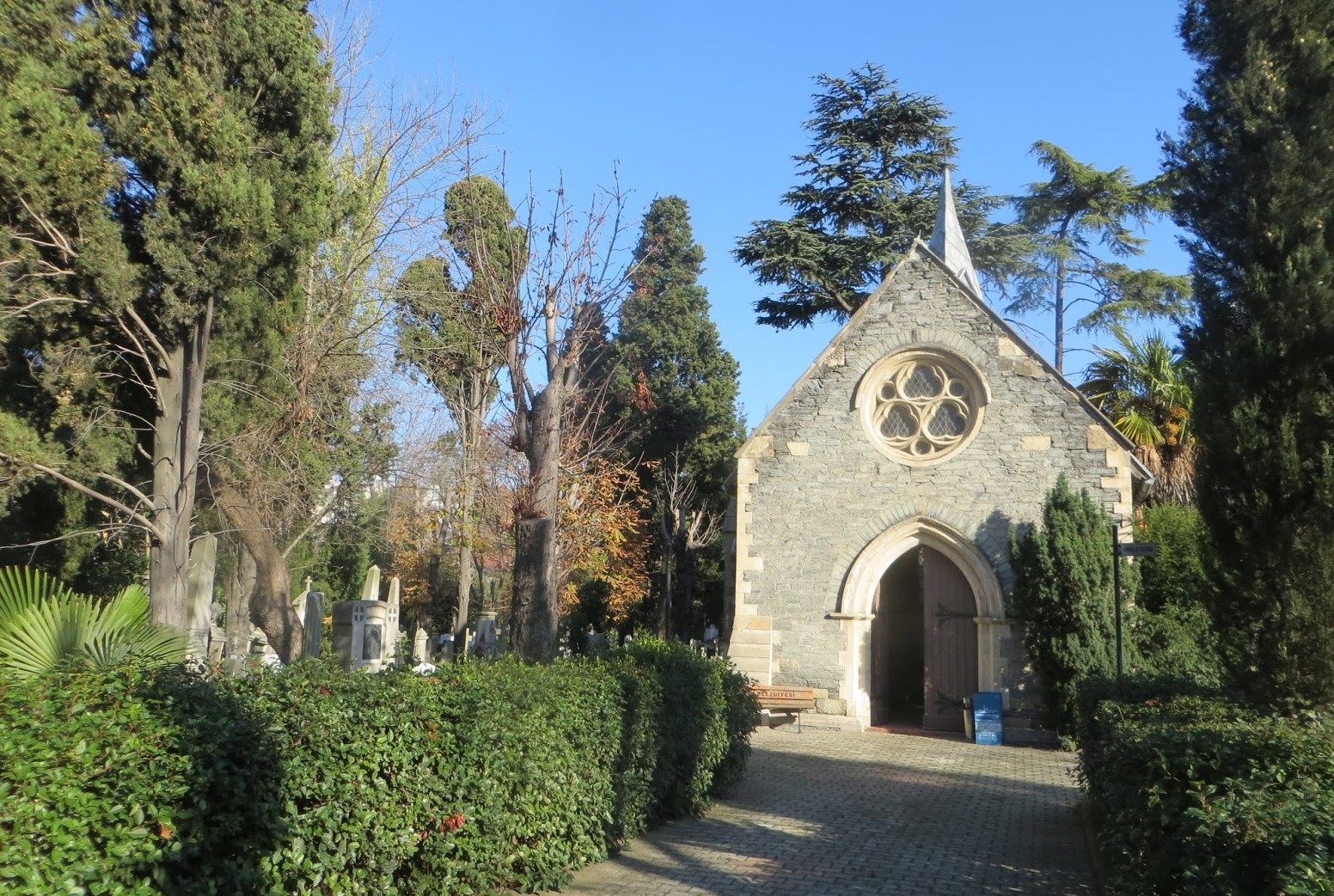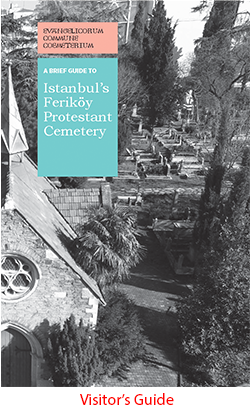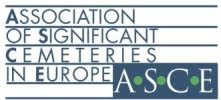Purpose:
The Feriköy Protestant Cemetery Initiative aims to preserve, document, and study Istanbul’s main Protestant cemetery as an important local historic landmark. It was founded in 2018 by scholars affiliated with the American Research Institute in Turkey (ARIT); the Netherlands Institute in Turkey (NIT); and the Orient-Institut Istanbul, and joined in 2019 by the Hungarian Cultural Center, the Swedish Research Institute in Istanbul (SRII), and the British Institute at Ankara (BIAA). These six Turkey-based research centers share the common goal of conserving, recording, and researching the site. The Feriköy Protestant Cemetery Initiative seeks to include other institutions and individuals interested in the cemetery both as an active burial ground and as a landmark.
The Initiative is a recognized member of the Association of Gravestone Studies (AGS), an international organization founded in 1977 to further the study and preservation of historic grave markers and cemeteries. It is also a corporate member of the Church Monuments Society (CMS), which has encouraged the appreciation, study, and conservation of tombs and funerary monuments since 1979. In September 2022, through the Initiative’s efforts, the Feriköy Protestant Cemetery joined the Association of Significant Cemeteries of Europe (ASCE). With more than 150 associated cemeteries across the continent, ASCE is Europe’s foremost professional organization for cemetery promotion and care, and membership provides vital support for the Initiative’s efforts to preserve the Feriköy Protestant Cemetery. The cemetery has a dedicated page on ASCE’s website.
Testament to Protestant life in Istanbul:
Prior to the establishment of a community cemetery at Feriköy in 1859, Protestant dead in Istanbul were usually buried in the Frankish (European) section of the Grand Champs des Morts or “Great Field of the Dead,” one of the city’s largest cemeteries, located in Pera (today’s Beyoğlu). Beginning in the mid-nineteenth century, the area north of Taksim witnessed rapid urban growth, and the Frankish graveyard lay directly in the path of expansion.
The Feriköy Protestant Cemetery Initiative aims to preserve, document, and study Istanbul’s main Protestant cemetery as an important local historic landmark. It was founded in 2018 by scholars affiliated with the American Research Institute in Turkey (ARIT); the Netherlands Institute in Turkey (NIT); and the Orient-Institut Istanbul, and joined in 2019 by the Hungarian Cultural Center, the Swedish Research Institute in Istanbul (SRII), and the British Institute at Ankara (BIAA). These six Turkey-based research centers share the common goal of conserving, recording, and researching the site. The Feriköy Protestant Cemetery Initiative seeks to include other institutions and individuals interested in the cemetery both as an active burial ground and as a landmark.
The Initiative is a recognized member of the Association of Gravestone Studies (AGS), an international organization founded in 1977 to further the study and preservation of historic grave markers and cemeteries. It is also a corporate member of the Church Monuments Society (CMS), which has encouraged the appreciation, study, and conservation of tombs and funerary monuments since 1979. In September 2022, through the Initiative’s efforts, the Feriköy Protestant Cemetery joined the Association of Significant Cemeteries of Europe (ASCE). With more than 150 associated cemeteries across the continent, ASCE is Europe’s foremost professional organization for cemetery promotion and care, and membership provides vital support for the Initiative’s efforts to preserve the Feriköy Protestant Cemetery. The cemetery has a dedicated page on ASCE’s website.
Testament to Protestant life in Istanbul:
Prior to the establishment of a community cemetery at Feriköy in 1859, Protestant dead in Istanbul were usually buried in the Frankish (European) section of the Grand Champs des Morts or “Great Field of the Dead,” one of the city’s largest cemeteries, located in Pera (today’s Beyoğlu). Beginning in the mid-nineteenth century, the area north of Taksim witnessed rapid urban growth, and the Frankish graveyard lay directly in the path of expansion.
Land for a new burial ground at Feriköy was presented in 1857 as a gift of Sultan Abdülmecit I (1839–61) to the embassies of the leading Protestant powers of the time: Great Britain, Prussia, The United States of America, the Netherlands, Sweden, Norway, Denmark and the Hanseatic Cities. Distant from the city’s settled areas, this site was ideal for a cemetery. Since the burial ground’s opening in 1859, approximately 5,000 individuals of all nationalities and backgrounds have been interred there. Almost detached in time and space from the modern metropolis outside its walls, the cemetery stands as a monument to Istanbul’s communal richness and diversity.
Cemetery administration:
Management of the Feriköy Protestant Cemetery is entrusted to a governing board comprised of the consuls general of Germany, the United Kingdom, the USA, the Netherlands, Sweden, Hungary, and Switzerland.
Preservation and documentation, past and present:
The Feriköy Protestant Cemetery Initiative benefits from and builds on the prior work of the American Board—a Protestant mission agency in Turkey from 1820 to 2010, whose library and archives have been inherited by ARIT—as well as the current projects of NIT and the Orient-Institut Istanbul. The Initiative’s current efforts to preserve and document the cemetery focus largely on establishing ties with professional organizations both in Turkey and abroad and on raising public awareness about the site through local and international channels.
Cemetery administration:
Management of the Feriköy Protestant Cemetery is entrusted to a governing board comprised of the consuls general of Germany, the United Kingdom, the USA, the Netherlands, Sweden, Hungary, and Switzerland.
Preservation and documentation, past and present:
The Feriköy Protestant Cemetery Initiative benefits from and builds on the prior work of the American Board—a Protestant mission agency in Turkey from 1820 to 2010, whose library and archives have been inherited by ARIT—as well as the current projects of NIT and the Orient-Institut Istanbul. The Initiative’s current efforts to preserve and document the cemetery focus largely on establishing ties with professional organizations both in Turkey and abroad and on raising public awareness about the site through local and international channels.
From 1997 to 2005, with a generous bequest from a former Istanbul resident, Emma “Charlie” Ehrmann, the American Board undertook various projects at the cemetery, including renovation of the chapel, construction of a visitor’s lodge, production of a historical display, publication of a promotional flyer, and preservation of tombs. The Board also collected data to create a permanent memorial record of all those buried at Feriköy. Its efforts were part of a long tradition of involvement at the site, beginning with the cemetery’s establishment in the late 1850s. Moreover, as a major US institution in Turkey for almost two centuries, the Board had interred at Feriköy many of its members and their families who died in service. As the inheritor of the Board’s historical legacy, ARIT also seeks to continue its efforts at the cemetery. Since 2015, it has made an annual guided visit part of its local tour program.
With the help of images generated by drones, NIT is currently creating a digital map to plot each grave at Feriköy. Since some are hidden by vegetation, they can only be made visible through pictures from above. Seventy-five percent of the cemetery’s 1,000 extant graves have already been plotted. The map can later be enriched by overlaying older plans of the site and, more significantly, by integrating it with textual and visual material from other sources. This important digital tool is not only vital for historical research and documentation but also for monitoring and conserving the cemetery.
In 2012, to enhance access to the funerary records of those buried at Feriköy, both for their descendants and for academic researchers, the cemetery’s governing board asked for help from the German Archaeological Institute Istanbul and Orient-Institut Istanbul. DAI contributed its digitization equipment and staff and produced digital images of the cemetery’s two official burial logs, dated 1858-93 and 1894-1991 respectively. Digitization was completed in 2012, and from 2013 to 2016, Orient-Institut Istanbul Acting Director Richard Wittmann and a team of young scholars used these images to put the logbook entries into an excel database in three languages: French, English, and German. In autumn 2018, the Orient-Institut Istanbul applied for financial support from the German Foreign Ministry to create a state-of-the-art software program with interface and search functions to enable descendants and academic researchers (per usage regulations set by the cemetery’s governing board and with safeguards for legitimate privacy concerns) to search the database at the Orient-Institut Istanbul’s library in Cihangir.
With the help of images generated by drones, NIT is currently creating a digital map to plot each grave at Feriköy. Since some are hidden by vegetation, they can only be made visible through pictures from above. Seventy-five percent of the cemetery’s 1,000 extant graves have already been plotted. The map can later be enriched by overlaying older plans of the site and, more significantly, by integrating it with textual and visual material from other sources. This important digital tool is not only vital for historical research and documentation but also for monitoring and conserving the cemetery.
In 2012, to enhance access to the funerary records of those buried at Feriköy, both for their descendants and for academic researchers, the cemetery’s governing board asked for help from the German Archaeological Institute Istanbul and Orient-Institut Istanbul. DAI contributed its digitization equipment and staff and produced digital images of the cemetery’s two official burial logs, dated 1858-93 and 1894-1991 respectively. Digitization was completed in 2012, and from 2013 to 2016, Orient-Institut Istanbul Acting Director Richard Wittmann and a team of young scholars used these images to put the logbook entries into an excel database in three languages: French, English, and German. In autumn 2018, the Orient-Institut Istanbul applied for financial support from the German Foreign Ministry to create a state-of-the-art software program with interface and search functions to enable descendants and academic researchers (per usage regulations set by the cemetery’s governing board and with safeguards for legitimate privacy concerns) to search the database at the Orient-Institut Istanbul’s library in Cihangir.
A note on our logo:
The Feriköy Protestant Cemetery Initiative’s logo reproduces the design of the rose window on the facade of the cemetery’s chapel, composed of trefoils and circles. These distinctive motifs evoke both religious and universal concepts, highlighting the cemetery’s dual spiritual and secular dimensions and underscoring its function as an international burial ground not only for “Protestants” but also for foreigners of different backgrounds and persuasions, including agnostics and atheists. Besides representing the Christian Trinity, the trefoil is a common symbol of perpetuity, with the three lobes signifying past, present, and future. An emblem for God, the circle also invokes general notions of timelessness, infinity, and the endless cycle of life. For some, the three circles in the cusps of the largest (outer) trefoil—with winglike tracery on either side—might resemble cherubim, or souls reborn in heaven; for others, the same spheres simply appear as harmonious patterns in an aesthetically pleasing design. This inclusive, multilayered imagery embodies the Initiative’s aim of safeguarding the historic role and heritage of the Feriköy Protestant Cemetery, in all its diversity and meaning.
The Feriköy Protestant Cemetery Initiative’s logo reproduces the design of the rose window on the facade of the cemetery’s chapel, composed of trefoils and circles. These distinctive motifs evoke both religious and universal concepts, highlighting the cemetery’s dual spiritual and secular dimensions and underscoring its function as an international burial ground not only for “Protestants” but also for foreigners of different backgrounds and persuasions, including agnostics and atheists. Besides representing the Christian Trinity, the trefoil is a common symbol of perpetuity, with the three lobes signifying past, present, and future. An emblem for God, the circle also invokes general notions of timelessness, infinity, and the endless cycle of life. For some, the three circles in the cusps of the largest (outer) trefoil—with winglike tracery on either side—might resemble cherubim, or souls reborn in heaven; for others, the same spheres simply appear as harmonious patterns in an aesthetically pleasing design. This inclusive, multilayered imagery embodies the Initiative’s aim of safeguarding the historic role and heritage of the Feriköy Protestant Cemetery, in all its diversity and meaning.

The Feriköy Protestant Cemetery Initiative’s aim is to coordinate and boost the efforts of its member institutions, as well as to provide counsel to other institutions and individuals interested in the preservation and study of Istanbul’s historic Protestant burial ground.
Zeynep Simavi & Brian Johnson

Fokke Gerritsen

Richard Wittmann

Gábor Fodor

Olof Heilo
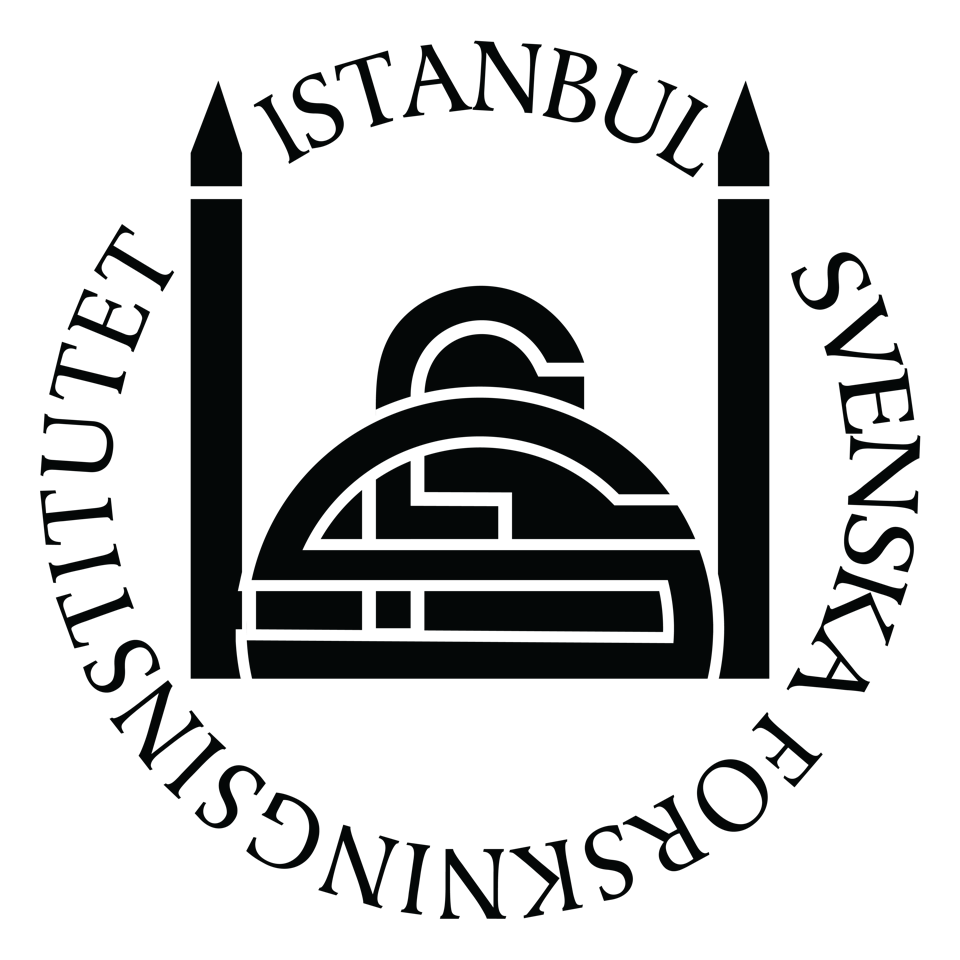
Daniel-Joseph MacArthur-Seal

